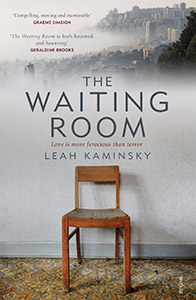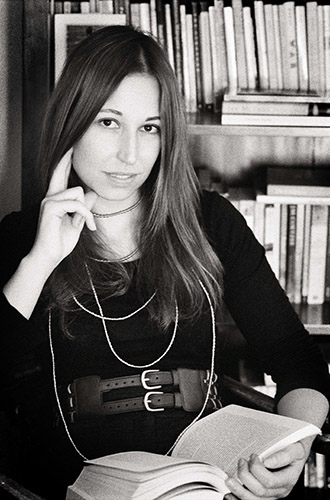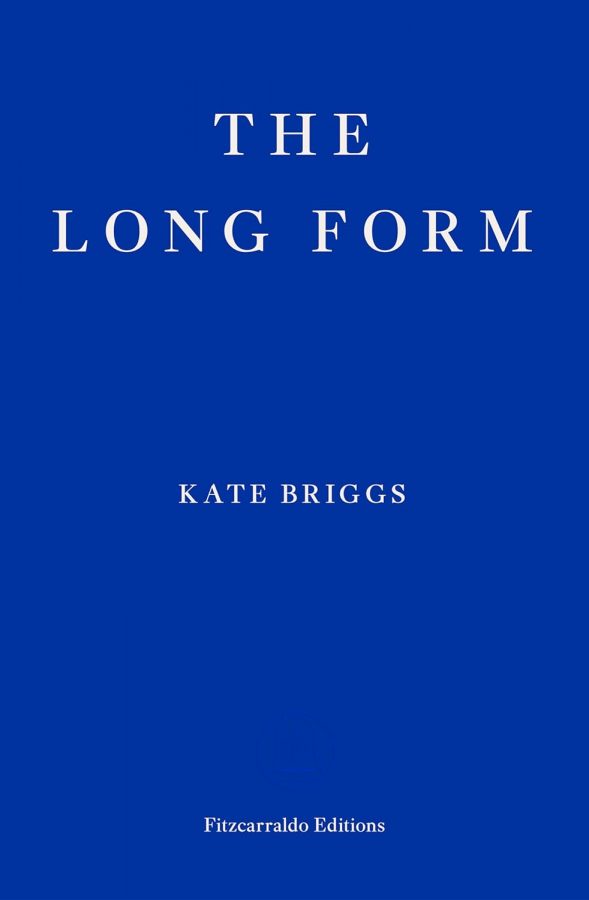In his acclaimed novel of post-Holocaust life, See Under: Love (1986), the Israeli novelist David Grossman transforms a murdered Jewish writer into a salmon, smuggles him out of wartime Poland and releases him from pier in Danzig. Bruno Schulz, who was brutally executed in the Drohobycz Ghetto in 1942, is given an imaginative resurrection as a shimmering fish, slipping towards the wide ocean.
He chose a salmon, Grossman explained in a 2009 essay in The New Yorker, because the fish seemed to him to be the magical incarnation of the journey; born in freshwater rivers then traveling in enormous schools to the saltwater of the ocean until some mysterious internal switch signals the fish to reverse direction and return home to the place of its birth to spawn its own children. The salmon travels vast distances, navigates currents and waterfalls, is preyed upon by bears and eagles. Regeneration, redemption and revival; it’s all there in the mythical lifecycle of the salmon. For Grossman, his fictional transformation was a way of redeeming a senseless and horrific death, a way of making one painfully evanescent life count for something more. ‘I didn’t want to live in such a world where something like that could happen,’ Grossman said of Schulz’s murder by the Nazis, ‘where people can be seen as replaceable, disposable. I felt that I must redeem his needless, brutal death. So I wrote See Under: Love.’
David Grossman’s literary transformation of Bruno Schulz is a fantastical resurrection, a miraculous reversal of a horrifying history. In a way this kind of redemption of the dead is the impossible project of all Holocaust literature. Stripped from the world in the most brutal and incomprehensible of ways, the dead are also at the mercy of those who can choose to commemorate them or to abandon them in memory, as they were abandoned in life. Generation after generation of post-war writers have grappled with this paradoxical project; Theodor Adorno expresses it eloquently in an essay written on the 25th anniversary of Mahler’s death:
As they are defenseless, at the mercy of our memory, so our memory is the only help that is left to them (the dead). They pass away into it, and if every deceased person is like someone who was murdered by the living, so he is also like someone whose life they must save, without knowing whether the effort will succeed. The rescue of what is possible, but has not yet been – this is the aim of remembrance.
The Waiting Room, the debut novel by Leah Kaminsky, and a powerful new addition to the canon of Australian Holocaust literature, takes as its impossible project the redemption of the dead – or at the very least their preservation in the pages of literature. In the Jewish tradition to commemorate is a holy act, memory a sacred and unbreakable conduit between the lost and the living and The Waiting Room, ranging elegantly across decades and continents, is haunted by the ghosts of the dead. The resurrected Holocaust dead – the murdered relatives of the main protagonist Dina Ronen – are here, and so too are the dead of Israel, the victims of suicide bombers and endless wars, the casualties of a place embroiled in tragic conflict.
*
The opening of the novel presents a literal tableau of the quest to redeem the dead, with a sobering scene of yellow-vested religious Israeli ZAKA volunteers painstakingly sifting through the carnage after a suicide bomb, tiny tongs in hand, searching for fragments of human bodies. According to Jewish law, a Jew must be buried exactly as he was born – complete with all his limbs and body parts from the hair on his head to the last fingernail – or his spirit will remain forever in turmoil. The human body, the precious house of the immortal soul, is considered as sacred in death as it was in life.
One of the ZAKA organisation’s key principles in Chessed shel Emet – the act of honoring the dead, and we soon learn that this is a powerful, if more personal, guiding force in Dina’s life. The Australian-born daughter of Polish Holocaust survivors, Dina has inherited the particular trauma common to the second generation. Growing up with tormented parents, in homes full of fraught silences, the children of survivors are infused with a history that is as much theirs as their parents, and yet one that is inchoate and impenetrable. Lily Brett, another inheritor of a catastrophic past and perhaps one of Kaminsky’s most significant literary and spiritual predecessors in terms of exploring the inherited trauma of the Australian children of Holocaust survivors, has written at length of the particular burden of the children of survivors, the desire to comprehend the abyss from which their parents had emerged. In an interview in Meanjin, Brett expressed this longing baldly:
I wanted to be one of them, I felt very left out. If I could have, I would have been in Auschwitz next to my mother, on the bunks, pressed right up against her. I didn’t want to be separated from my mother by this enormous gulf.
Brett is one of Australia’s best known second-generation chroniclers of the Holocaust, and her many novels have obsessively investigated the particular experiences of the second generation, while also functioning as compelling works of fiction in their own right. The Holocaust has always had an uneasy and complicated relationship to literature, despite the fact that it has heavily influenced most post-war Jewish writers, as well as many non-Jewish ones. Since the first emergence of the genre, there has been a fraught philosophical debate about the ethics and inadequacies of fictional representations of the Holocaust. Well aware of Theodor Adorno and Elie Wiesel’s now-famous injunctions about art after Auschwitz, novelists have grappled with the imperative for strict verisimilitude and qualms about artistic appropriations of experiences that defy expression and the potential callousness of aestheticising profound horror, as well as the perceived primacy of the memoir over fictional representations and its inviolability to criticism. Holocaust fiction, however, has been cast as the pathos to history’s logos – as a vivifying and emotionally disturbing counterpart to the unadorned memoir or the text of the history books. As early as 1946 when Taddeus Borowski published his first stories about Auschwitz and 1947 when Paul Celan penned his famed poem ‘Todesfuge’, (which is thought to have engendered Adorno’s outburst), writers have produced imaginative literature about the Holocaust, and we have yet to satisfy our need for artistic representations that might help us understand the most obscene catastrophe of humanity.
Interestingly, in Australia, it has tended to be the second-generation cohort of writers that has produced the most compelling and intimately engaging accounts of the still potent legacy of Holocaust trauma. It has been rare for Australian survivors to achieve commercial publication and their work has been limited primarily to memoir rather that any sort of imaginative recasting. Non-Jewish writers, most famously Thomas Keneally and Anna Funder, have used novelistic means to tell stories based carefully on known facts, with Keneally himself referring to Schindler’s Ark as a ‘non-fiction’ novel based entirely on historical accounts because of his fear that fiction that took greater liberties would risk debasing the record. We have no Australian Primo Levi or Jerzy Kosinski or Charlotte Delbo. Instead we have a small but impressive and eclectic canon of second-generation writers including Lily Brett, Arnold Zable, Suzanne Varga, Ramona Koval and Mark Baker, who have all produced powerful work grappling with the fraught questions of remembrance and forgetting.
Kaminsky, who is herself the daughter of a Holocaust survivor, has also limned this terrain in her poetry. Her poetry collection Stitching Things Together (2010) explores the complex struggles of the children of survivors to excavate their own stories and identities while bearing witness to their parents’ histories; The Waiting Room is a more capacious and fulsome examination of the same compelling material. In a recent interview at the Sydney Jewish Writers Festival, Kaminsky spoke about how her complex transactions with her parents’ pasts as a young woman led her to develop a certain impatience with their sombre legacy and a pressing desire to escape their litany of sorrow. Her mother died when Kaminsky was only 21, and she was left with unsatisfying fragments of her war-time experiences and of the lost world in Poland that existed before the conflagration. Writing the novel was, in many ways, Kaminsky said, her means of atoning for not properly listening to her mother’s stories, an antidote to the guilty incuriosity of her younger years.
In The Waiting Room, Dina, a mother herself and a family physician, has escaped the claustrophobic Jewish community of Melbourne and created a new life in Israel with her sabra husband Eitan. But wherever she goes Dina is accompanied not just by unquiet memories of her mother, but by apprehensions of danger and unease. She is constantly in communion with the ghosts of the dead and fearful for her family’s safety. The action of the novel takes place over the course of one day and the authorial lens zooms in on Dina’s daily activities – and then pulls back. The narrative ranges across time and geography as the story of Dina’s life unspools. Most of the time this device works brilliantly, and Kaminsky makes masterful use of free indirect narrative to inhabit both Dina’s exquisite emotional introspection and reflection and the anxieties of daily life in a city facing a terror alert. The story weaves between public and private life, between beautifully rendered dailiness and the equally acute claims of the larger narrative of haunted legacies and restless ghosts.
The lost mother is a palpable spectral presence throughout the novel; it is the fictional rendering of the exquisitely complex relationship between mothers and daughters that gives The Waiting Room much of its emotional power. Dina’s mother has been dead for many years and yet she stalks her daughter relentlessly, dispensing advice, reproach and remonstration, as well as comfort. All the echoes of their fraught relationship in life and the too-heavy shadows of the Shoah over the maternal bond are magnified. In her poetry, Kaminsky has hinted at her own mother’s restless, harrowed mind and the way that her own pain was swallowed up by the larger claims of her mother’s suffering. In a poem entitled ‘Dealing the Cards’, Kaminsky writes:
did the volts burn the darkness in her
and force my faceless relatives to move on
searching for shelter in another’s haunted mind?
unspoken words piled up between us
silent, like murdered bodies
the what-we-should-have-saids
the if-onlys.
We never learn exactly what happened to Dina’s mother during the war or in Bergen-Belsen. Most of Dina’s knowledge of her parents’ history has come to her from a distance, caught in whispered asides and overheard conversations, their reticence turning her into a bewildered archivist. The story comes to the reader only in fragments, as it did to Dina. There is fleeting reference to the Lodz Ghetto, to bayonets and cattle cars, a menacing Alsatian baring its teeth. We learn that Dina’s mother cooked a Polish version of gnocchi for the SS soldiers who sent the rest of her family to the gas chambers, that she was torn away from her mother in a camp selection, but Kaminsky carefully avoids any carefully packaged re-telling. It is perhaps a truer reflection of the nature of traumatic experience and memory that there is no coherent narrative, no attempt to explain a history that is beyond comprehension. Kaminsky is fully cognisant of the ontological and linguistic void produced by extreme psychic trauma, and of trauma theory itself as a discourse of the unrepresentable.
The shreds of story that Dina and the reader are told are relics of a past that can never truly be known and accordingly the novel is full of objects and symbols that stubbornly refuse to yield their full meaning. One of the most quietly breathtaking passages in W.G Sebald’s novel of the Holocaust, Austerlitz, a text with which The Waiting Room is in dialogue, is the painstaking description of a visit to the hauntingly empty town of Terezin (better known by its German name of Theresienstadt) many years after the war. The protagonist, Jacques Austerlitz, stands in front of the window of an antiques emporium, transfixed by the curious array of objects on display. He describes cut-glass bowls and globe-shaped paperweights, staghorn buttons and porcelain statues. A little box of seashells and a taxidermy squirrel. A miniature barrel organ and a festive white lace tablecloth. These objects, plucked from obscurity and frozen into a disconcerting tableau behind a dusty window in an old Jewish ghetto, take on a chilling cast when one realises that they are most likely the belongings of the deported and murdered Jewish dead of Terezin. The seemingly benign trinkets take on the same terrible resonance as the piles of abandoned shoes, suitcases and spectacles that lie in glassed-in displays in Holocaust museums around the world.
They were all as timeless as that moment of rescue, perpetuated but forever just occurring, these ornaments, utensils and mementoes stranded in the Terezin bazaar, objects that for reasons one could never know had outlived their former owners and survived the process of destruction, so that I could now see my own faint shadow image barely perceptible among them.
Just as the dead and the living are forced together into uneasy proximity in The Waiting Room, so too do resonant objects jostle with and overcrowd the lives of the characters. An ancient abacus, an eiderdown that her mother brought with her from the displaced person’s camp in Germany, her father’s glass eyewash cup, her mother’s old shoes, cufflinks and hair curlers, indecipherable letters in Yiddish and uncaptioned photographs discovered in an old tin: these objects are the tangible relics of pasts that will never truly reveal themselves. Just as the piles of shoes at Yad Vashem are shadowy simulacra for their vanished owners and for a history that is too inexplicable to be fully contemplated, so too are the myriad objects in Kaminsky’s novel also a kind of assortment of metonyms that stands in for a past that is impossible to retrieve.
*
As much as The Waiting Room is a book about the Holocaust and its uneasy ghosts, it is also a book about the promised nation born out the horrifying insult of the Shoah – the land of Israel. There’s a Hebrew term called ha-matsav, which roughly translates as ‘the situation’ and has come to stand in for the fear that has gripped the nation for most of its young life, and for the way that fear has not only dominated political life but has also invaded the intimate spaces of domestic life. In The Waiting Room, which is set during the second intifada and the wave of terrorism that followed the collapse of the Camp David peace talks, the deforming psychic constriction that comes with living in a perpetual state of fear and conflict is painfully rendered by Kaminsky, who spent ten years living in Israel and knows well the complexities of the region.
This individual price of war is finely caught in an essay by David Grossman in his collection, Writing in The Dark;
I feel the heavy price that I and the people around me pay for this prolonged state of war. Part of this price is a shrinking of our soul’s surface area – those parts of us that touch the violent, menacing world outside – and a diminished ability and willingness to empathise at all with other people in pain… The constant – and very real – fear of being hurt, the fear of death, of intolerable loss, or even of ‘mere’ humiliation leads each of us, the citizens and prisoners of the conflict, to dampen our own vitality, our emotional and intellectual range, and to cloak ourselves in more and more protective layers until we suffocate.
Dina already knows that safety is always provisional, that all homes in the world can be lost. It is a knowledge burned into her by her parents; living in a disaster zone has further constricted her already troubled soul. The brief interlude of mutual hopefulness that followed Rabin and Arafat’s famous handshake on the steps of the White House has long dissipated when the novel opens. The country is mired in ever more horrific attack and counter-attack, with a traumatic impact on both Palestinians and Israelis. Dina lives clenched with fear of harm coming to her son Shlomi, either in the form of a terror attack or in the inevitable future as an IDF soldier that awaits him.
Even though he is only six years old, Dina already imagines him as a Golani infantryman, walking across fields in southern Lebanon, dressed in khaki, a rifle flung over his shoulder. She is living into his future, stepping out with him onto the battlefield, hovering above him, or creeping along behind, watching as he takes a sniper’s bullet to the chest, reaching for him as he falls to the ground.
As much as she has made her own covenant with her adopted land, Dina longs to take her family back to the quiet shores of Australia, for her son to play Australian Rules Football in Caulfield Park and watch the black swans paddling around Albert Park Lake. This desire to flee from the trouble is the source of enormous conflict with Dina’s husband, Eitan. Their wrangling over the topic adds much to the narrative tension of the novel, as well illuminating the disparities and complexities of the country itself. Eitan was born on a kibbutz – the most potent and idealistic symbol of the proud Jew’s return to his ancient land – and has grown up in a young and exuberant Israel of military heroes, burgeoning kibbutzim and collective national purpose. Growing up, he was witness to the now-mythicised military victories, to the emotional scenes of young Jewish soldiers praying at the Western Wall of the ancient Temple for the first time in centuries, to the promise of modern Zionism that existed before ceaseless war, occupation, settlement and terror took hold. Eitan is full of the tough, unironic manliness of the native-born Israeli and in one heated scene, he accuses Dina of being a Galutnik, a cowardly Diaspora Jew not steely enough for the challenges of living in the promised land.
It is a testament to Kaminsky’s talent that, despite the ever-present shadows of conflict and fear, she succeeds in rendering beautifully a country struggling to contain all its disparities. Her deep connection to Israel, its sounds and smells and idiosyncrasies, redeems the novel from the constrictions to which it might otherwise have been subject. Her attentiveness to the complexities of character and her release of the individuals she depicts from the distorting grips of cliché, make this a vitally important work about a place that is often depicted in crude terms. And always, despite the warped conditions in which both sides are forced to live, Kaminsky holds out the possibility of something different, of a peace that few dare to hope for any more.
At school, the children sing songs of wild cyclamen and anemones in the hills – of a time when there will be peace. People in this country live with a hope that all these wars will end someday. Even a simple hello or goodbye in both Hebrew and Arabic – shalom, salaam – has the word ‘peace’ embedded in it. The whole region utters it like a mantra, millions of times every day.
Peace. Peace and redemption from the saturation of history, the weight of the dead and the excesses of memory and fear – it’s what Dina is desperately seeking, and on another level it is the quest of Israel itself. The Waiting Room could never have ended with the kind of poignant reparation that Grossman grants his fictional Bruno Schulz-salmon character. It is not that kind of novel. But a redemption of sorts does come to pass. In a final encounter of devastating power, Dina visits her mother’s grave in a Melbourne cemetery in an attempt to lay her to rest at last. The closing scene echoes the novel’s opening where the ZAKA volunteers graft together human remains so that the souls of the dead can pass into the next world. The living, it seems, do have agency over the dead, can after all release them from turmoil – but only when they are properly buried in the ground.
References
Theodor Adorno, ‘Marginalia on Mahler’, Essays on Music (University of California Press, 2002).
Lily Brett, ‘Walking with Ghosts’, Meanjin 59 Volume 1. 2000.
David Grossman, See Under: Love (Jonathan Cape, 2002).
David Grossman, ‘The Age of Genius: The Legend of Bruno Schulz’, The New Yorker, June 8, 2009 issue .
Leah Kaminsky, ‘Dealing the Cards’, Stitching Things Together (Interactive Press, 2010).
W.G. Sebald, Austerlitz (Penguin, 2002).







